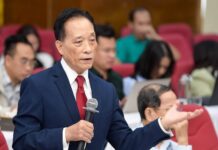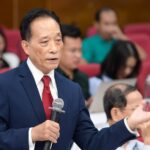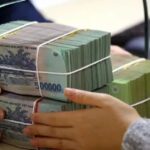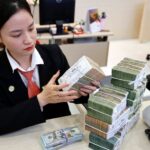At a recent seminar titled “Gold Trading Floor: Market Transparency and Macroeconomic Stability,” organized by Tien Phong Newspaper, economic expert Dr. Can Van Luc emphasized that the most critical issue at present is clearly defining the scope of gold that requires regulation.
According to Dr. Luc, gold bars and bullion—which are primarily used for investment, reserves, and directly impact financial stability—must remain under strict control. Conversely, gold jewelry and artisanal gold, which are consumer goods with high added value from craftsmanship, should be subject to more appropriate regulatory measures. Overly rigid mechanisms, similar to those applied to gold bars, would be unnecessary and costly.

Economic expert Dr. Can Van Luc. (Photo: Tien Phong)
Dr. Luc also urged Vietnam to reassess the “goldization” of its economy, determine the extent of gold hoarding among citizens, transparently disclose data, and firmly end all gold-based lending and borrowing practices to mitigate systemic risks.
Regarding the price gap between domestic and international gold, Dr. Luc stressed the urgent need to increase the supply of legally sourced gold. This includes reducing production costs, standardizing gold bar specifications, and facilitating easier import and manufacturing processes for businesses to eliminate supply shortages.
“When accessing gold becomes excessively difficult, curiosity and panic buying intensify, destabilizing the market,” Dr. Luc remarked.
To address this, the expert advocated for market transparency and the creation of alternative, attractive investment channels to redirect capital toward productive sectors rather than gold speculation. Additionally, efforts to combat gold smuggling must be strengthened, and Decree 232 should be fully implemented to ensure a legal and transparent increase in gold bar supply.
On the topic of gold trading floors, Dr. Luc noted that the legal framework established by National Assembly Resolution 222 and Politburo Conclusion 203 provides a foundation for exploring gold trading models. However, it is essential to determine the most suitable model for Vietnam: an independent gold exchange, trading through a commodity exchange, or locating it within the international financial center in Ho Chi Minh City. This decision should be accompanied by clear mechanisms for price listing, transaction fees, import/export regulations, and inter-ministerial coordination.
Prime Minister Directs Development of Support Plans for Businesses Affected by U.S. Countervailing Taxes, to Be Completed by November
Prime Minister Phạm Minh Chính has issued Directive No. 221/CĐ-TTg on November 19, 2025, emphasizing the prioritization of maintaining macroeconomic stability and boosting exports.
Prime Minister Mandates Inflation Control and Macroeconomic Stability
The Prime Minister has called for a harmonious, rational, and effective integration of monetary policy, fiscal policy, and other macroeconomic policies to ensure inflation is controlled in line with the established targets.









































